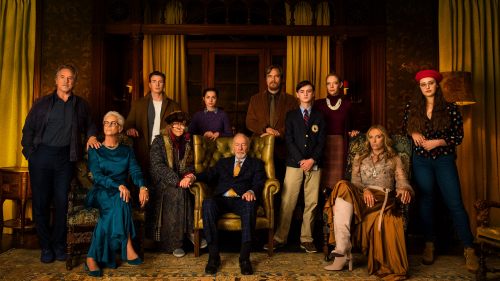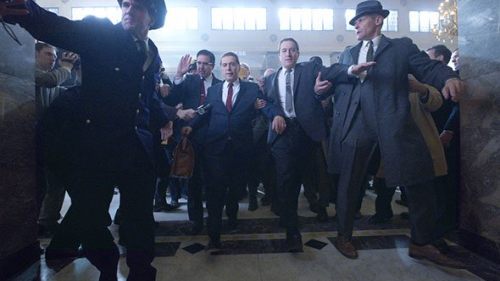THE RHYTHM SECTION Review: Blake Lively Carries the Tune
The Rhythm Section is billed as coming “from the producers of James Bond” even as director Reed Morano and star Blake Lively have been publicly assuring that its heroine is not a female 007. Indeed, even given its globetrotting among various exotic locations and international intrigue, this is perhaps the least glamorous of the subgenre dealing with ordinary women being pressed, or pressing themselves, into service as assassins, which has ranged from the oeuvre of Luc Besson to the Jennifer Lawrence vehicle Red Sparrow.
In this adaptation of Mark Burnell’s novel, scripted by the author himself, Stephanie Patrick (Blake Lively) has a particularly strong motivation to take up a gun and go on the hunt. She lost her entire family in a plane explosion, and—after one of those currently trendy but entirely unnecessary opening flash-forwards to the protagonist in action—we meet her having hit rock bottom in the wake of the tragedy, now a prostitute in a seedy part of London. When investigative reporter Keith Proctor (Raza Jaffrey) tracks her down with the news that the airliner was destroyed not due to the reported mechanical failure but by a terrorist bomb, and that a cover-up has allowed the creator of that bomb to go free, he inspires Stephanie to take justice into her own hands.
The problem, and the movie’s dramatic theme, is that she’s not very good at it. It’s clear from her first attempt to track the bomb-maker that Stephanie’s drive far outweighs her skills, and Lively makes her desperation feel real and motivated enough that we want to see her continue her quest for payback. Having previously demonstrated her survival chops as The Shallows’ shark-menaced surfer, Lively significantly deglamorizes here, going without makeup and immersing herself in Stephanie’s psychic pain. There’s physical abuse to go with it after she finds her way to a middle-of-nowhere village where ex-MI6 operative Boyd (a grizzled Jude Law), who had been feeding Proctor information, has been hiding out, and he reluctantly agrees to give her tough-love training to prepare her for the quest she has taken on.
Even Boyd’s ruthless ministrations don’t fully prepare Stephanie for what she faces once she gets out into the field, and for the first half, Morano (jumping into the big leagues after a couple of indie films and Emmy-winning work on Hulu’s The Handmaid’s Tale) and Lively keep us caught up in the question of whether she can survive her self-appointed mission, let alone carry it out. As she treks from Tangiers to Marseilles to Manhattan, hunting down assorted players in the terrorist game that claimed her parents and siblings (including an upper-class sleazebag and a bottom-dwelling one, played colorfully by Max Casella and Rob Zombie regular Richard Brake respectively), Morano and cinematographer Sean Bobbitt often hold the camera tight on Stephanie’s anxious, tormented face, adopt her point of view or keep us close beside her. The latter gambit is particularly well-deployed during a lengthy car chase, edited to play like a seamless take, that puts all the emphasis on Stephanie’s desperate reactions rather than the damage happening around her.
It is after this sequence, however, that The Rhythm Section begins to drop the beat. As persuasive as Lively’s characterization is, the movie loses sight of Stephanie’s humanity the longer it goes on, and becomes plot-driven at the expense of letting us see how the experience truly affects her. In the course of acquiring intel on her targets, Stephanie hooks up with information broker Marc Serra (Sterling K. Brown), and their relationship eventually becomes physical in a way that feels false, and a distraction from the through-line of her story. Similarly, the film becomes tangled up in reversals and sudden revelations of hidden allegiances and motivations, which occasionally become hard to follow and take up time that could have been better spent on exploring the true psychic toll all these exploits must be taking on the happy student Stephanie once was, and whom we see briefly in gauzy flashbacks to her previous life with her loved ones.
Perhaps to keep true to its title, The Rhythm Section makes use of a number of pop songs from various vintages that serve little purpose except to underscore emotions that already are, or should have been, engendered by the filmmaking. Everyone involved should have trusted that Lively’s performance would be enough to grab and hold the audience, and kept the storytelling as focused as Stephanie’s determination to achieve revenge for her family, and catharsis for herself.



